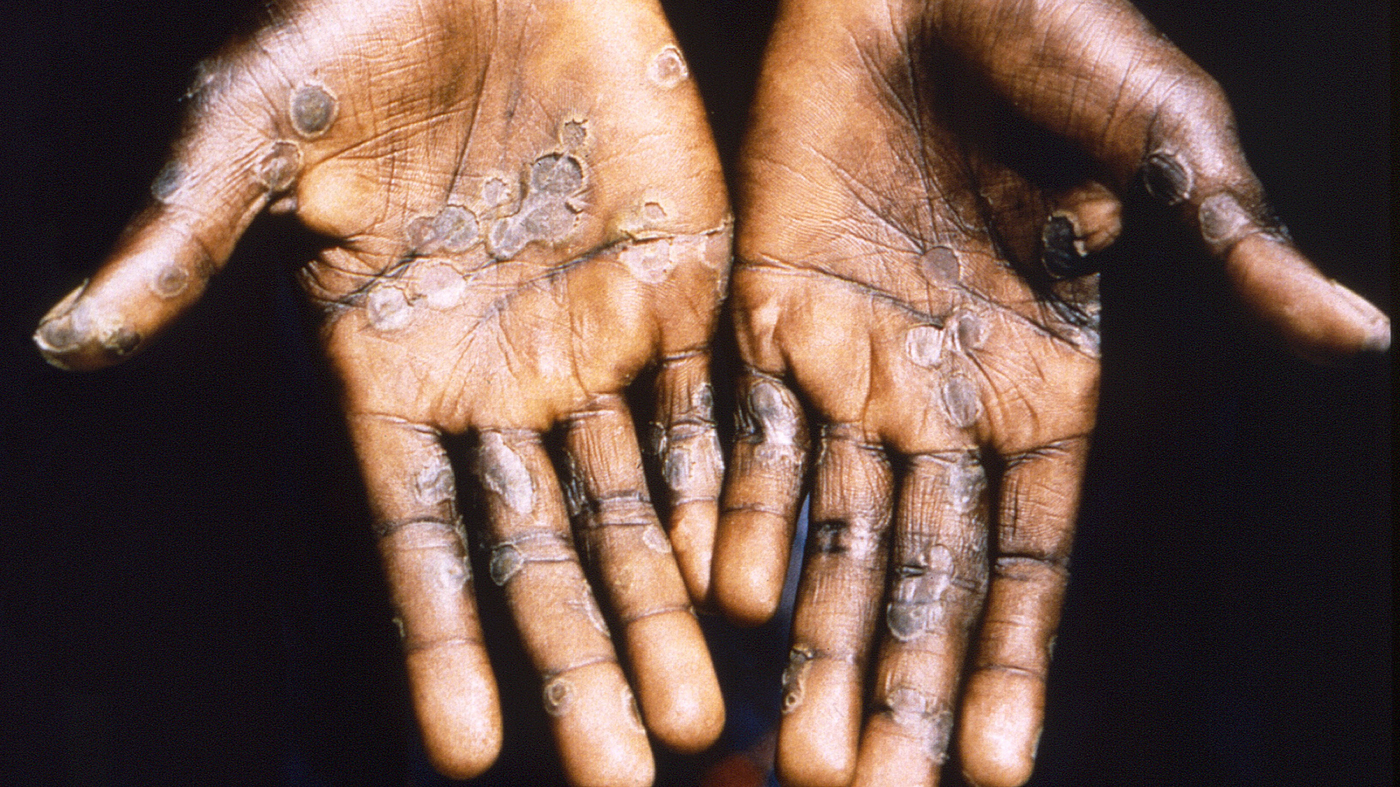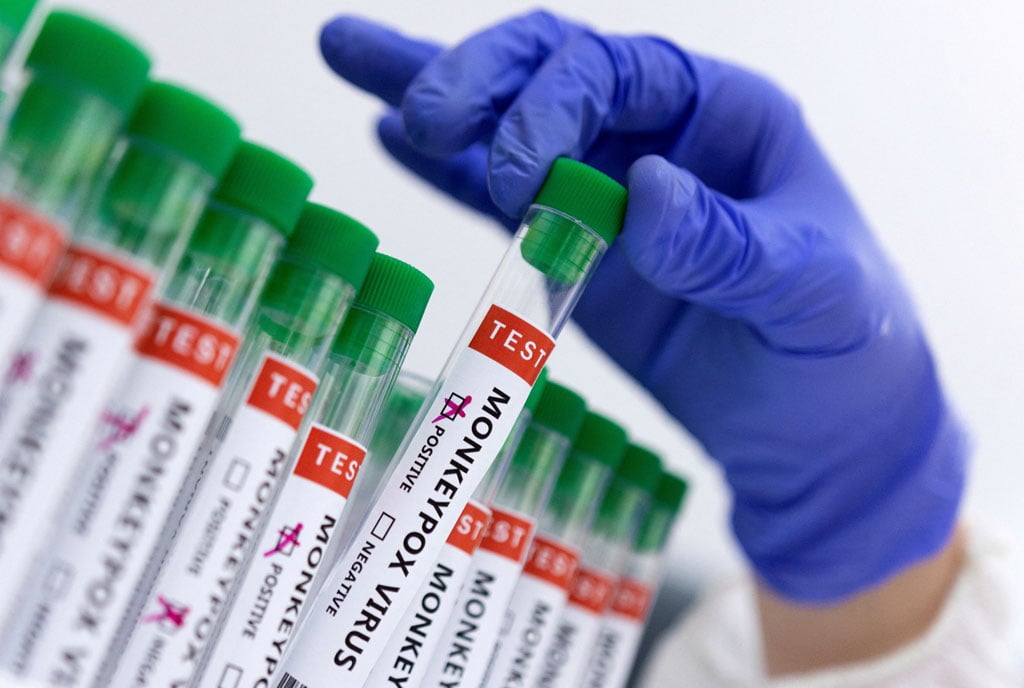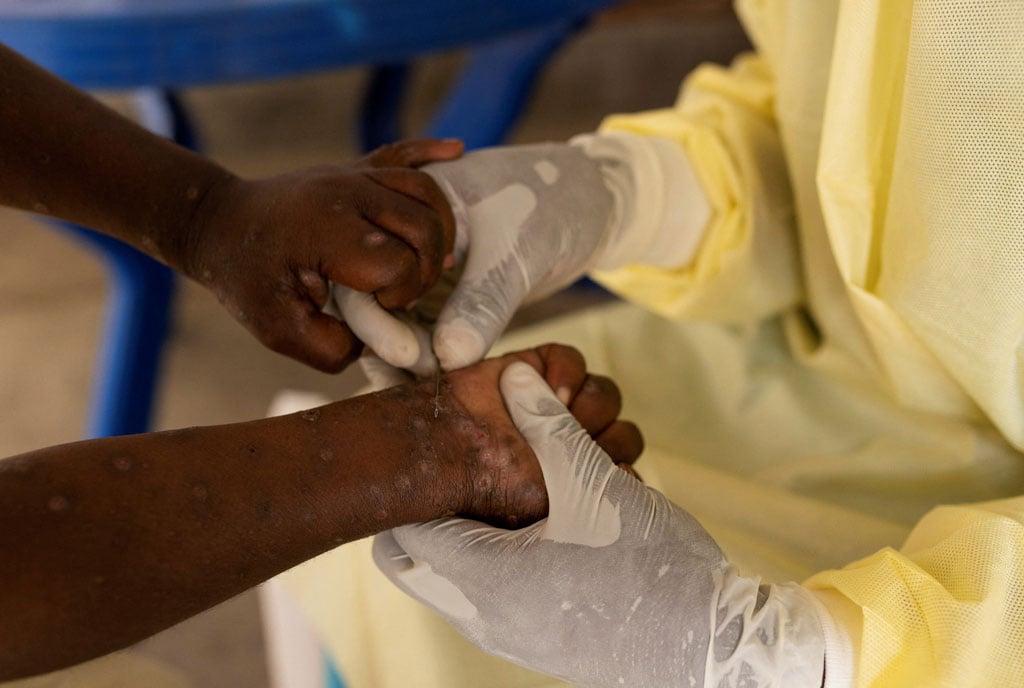
The rash will be dry during the healing stage rather than blistered and oozing as it was during the acute stage. PHOTO/NEWS.UN.ORG
Mpox, formerly known as monkeypox, is a rare and infectious disease caused by the mpox virus. The virus was first identified in 1958 and is typically found in Central and West Africa. However, in recent years, mpox has spread to other parts of the world, causing concern among global health authorities.
Dr Franklin Wasswa, a general physician at Entebbe Grade B Hospital, says mpox is a zoonotic disease, which is usually spread through contact with infected animals such as rodents, or through human-to-human contact.
Its symptoms include fever, headache, muscle aches and a rash. While mpox is rarely fatal, it can cause severe illness and death, particularly among vulnerable populations such as young children, pregnant women and those with a compromised immune system.
The global impact of mpox has been significant, with cases reported in more than 70 countries. The World Health Organisation (WHO) declared the mpox outbreak a Public Health Emergency of International Concern (PHEIC) in July 2022 and an outbreak of a public health emergency of international concern on August 14.
The virus has spread rapidly and has highlighted weaknesses in global health infrastructure and preparedness. The economic impact of mpox has also been substantial, with significant costs associated with contact tracing, vaccination and treatment.
Since the beginning of the year, more than 17,000 mpox cases and more than 500 deaths have been reported in 13 countries in Africa, including DR Congo, Burundi, Kenya, Rwanda and Burundi, according to the Africa Centre for Disease Control and Prevention.
As the world continues to grapple with the mpox emergency, it is essential to understand the causes, symptoms, and response measures to mitigate its impact.
Uganda’s situation
Uganda has identified only two cases of the disease from Kasese District and the Minister of Health, Dr Jane Ruth Aceng, assured Ugandans that the monkeypox (Mpox) outbreak in the country is under control and being managed efficiently by her ministry.
"An emergency response mechanism, the Incident Management System, consistent with what was used to respond to the Covid-19 pandemic and the 2022 Ebola epidemic response has been activated," she told Members of Parliament in her statement on the monkeypox situation in Uganda.
Despite the two cases being treated and discharged without serious complications, Dr Aceng warned that "the disease remains a danger due to its rapid spread in neighbouring DRC."
The Africa Centres for Disease Control and Prevention (Africa CDC) has set up a 25-member Incident Management Team to support affected and at-risk countries, including Uganda. The team is based at the epicentre of the mpox epidemic and will oversee the equitable distribution of vaccines, prioritising local needs across the affected member states.
What is mpox?
Mpox is caused by the mpox virus, which belongs to the Orthopoxvirus genus, which includes other viruses such as smallpox, cowpox, and camelpox. The virus is thought to be transmitted to humans through contact with infected animals, such as rodents, primates, or other wild animals.
“Transmission of the disease is primarily through direct contact with the rash, scabs, or bodily fluids of an infected person. This can occur during close physical contact, including sexual contact, respiratory droplets from coughing or sneezing and contact with contaminated surfaces or objects such as clothing or bedding,” says Dr Wasswa.
Monkeypox can be transmitted from animals to humans through bites or scratches from infected animals, particularly rodents and primates. Handling or consuming the meat of infected animals, particularly wild game (bushmeat), can also be a source of transmission.
The virus can be transmitted from an infected pregnant woman to her faetus via the placenta, which may result in congenital monkeypox.
However, the health minister warns that despite the self-limiting nature of Mpox, in several cases, the disease can be fatal and may cause death, especially in children under five years, pregnant women and individuals with weak immunity.
“If robust interventions are not made, infection may spread and huge patient case numbers can overwhelm the health systems as we see elsewhere,” Dr Aceng adds.
She identified high-risk groups for infection, including "UPDF officers in Congo, sex workers, and long-distance drivers." She also explained that the government chose to contain the virus rather than declare an outbreak to avoid unnecessary panic and disruption.
According to WHO, contracting mpox during pregnancy can be dangerous for the faetus or newborn infant and can lead to loss of the pregnancy, stillbirth, death of the newborn, or complications for the parent.
Signs and symptoms
The signs and symptoms of mpox typically develop within 10-14 days of exposure to the virus and can vary in severity among individuals. Therefore, while some people may experience mild symptoms, others may have more severe illness. If you suspect you have been exposed to mpox or are showing symptoms, seek immediate medical attention.
“The disease presents with small boils on the skin, which often start on the face, then spread to other parts of the body. One will also have high-grade fever, swelling of lymph nodes which can be painful and occur in the neck, armpits, or groin, headache and general body weakness, pain and discomfort in the muscles, back, and limbs,” Dr Wasswa says.
The rash often goes through several stages from flat, red spots on the skin, to raised bumps that appear on the skin. The bumps are then filled with clear fluid, which later turns yellowish then eventually scab over and fall off.
Diagnostic process
In Uganda, the diagnostic process for identifying mpox involves a combination of clinical evaluation, laboratory testing and epidemiological investigation.
A healthcare worker assesses the patient's symptoms, medical history, and physical examination to determine if they meet the case definition for mpox. If the patient is suspected to have mpox, samples of blood, respiratory secretions or lesion swabs are collected for laboratory testing.
The samples are then sent to the Uganda Virus Research Institute (UVRI) or other designated laboratories for Polymerase Chain Reaction (PCR) to detect the mpox virus genome, Virus isolation or Serology (antibody testing).
When confirmed, a thorough investigation is conducted to identify the source of infection, including contact tracing, exposure and travel history.
Confirmed cases are reported to the WHO and the Ugandan Ministry of Health for surveillance and response purposes.
Challenges
Controlling the outbreak of mpox in Uganda faces several challenges such as fear, misconceptions, and stigma surrounding mpox, leading to delayed seeking of medical attention. There is also resistance to vaccination due to misconceptions or fear and misinformation
Inadequate laboratory facilities for testing and confirmation of the disease hinder its control. For instance, UVRI is the only institution authorised and mandated to diagnose the disease.
Insufficient healthcare workers, especially in rural areas in Uganda make access to medical services hard. Also, global supply chain constraints such as shortages of vaccines, personal protective equipment (PPE), and other essential supplies limit the control of the outbreak of the disease both locally and globally.
“To keep the disease under control,” Dr Wasswa says, “there is a need for enhanced surveillance and monitoring in the vulnerable groups through priority vaccination, early detection through screening and treatment, education and awareness campaigns as well as improved access to healthcare services.”
The risk of transmission can be reduced with proper precautions, such as avoiding contact with infected animals or people, wearing personal protective equipment (PPE), practising good hygiene like washing hands frequently, as well as getting vaccinated (if eligible).
Treatment Treatment of Mpox is symptomatic, depending on the complaint as there is no specific treatment for the virus. In her ministerial statement, Dr Jane Ruth Aceng noted that there is currently no specific treatment for the virus, but two vaccines are undergoing trials.
"These vaccines are yet to be approved by the WHO. Vaccines are crucial in preventing the spread of diseases. Let us avoid spreading false information about them," she says.
Considerations for those living with HIV
According to africacdc.org, it is currently unknown if HIV increases the risk of infection with monkeypox. However, people living with HIV (PLHIV) who are not virally suppressed may be at increased risk of severe morbidity, prolonged illness, and increased mortality. There is no counter-indication for people on pre-exposure prophylaxis who have monkeypox.
PLHIV should follow the same recommendations provided to protect themselves from monkeypox. They should also ensure to be adherent to their antiretroviral drug treatment and present for regular follow-ups at their local clinics for continued care.



